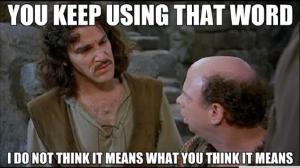Blog
Real and Unreal
4 June 2015
Quantum theory is strange, but very real. Through countless experiments we’ve found that quantum objects have both particle-like and wave-like properties. In some experiments the particle nature dominates, while in others the wave nature dominates. Some experiments can even show the effects of both properties. This duality between particles and waves in quantum theory is deeply counterintuitive, which means often the results of quantum experiments are interpreted incorrectly.
Take, for example, recent claims that reality doesn’t exist until we measure it. The claims arise from a recent experiment published in Nature that uses a single atom to perform what is known as the delayed-choice experiment.1 This experiment was first proposed as a thought experiment (gedanken experiment) by John Wheeler as a way of exploring the counterintuitive aspects of particle-wave duality.
Wheeler’s idea was to imagine a “cosmic interferometer.” Suppose light from a distant distant quasar were to be gravitationally lensed by closer galaxy. As a result, light from a single quasar would appear as coming from two slightly different locations. Wheeler then noted that this light could be observed in two different ways. The first would be to have a detector aimed at each lensed image, thus making a particle measurement. The second would be to combine light from these two images in an interferometer, thus making a wave measurement. According to quantum theory, the results of these two types of experiments (particle or wave) would be exactly as we’ve observed in their standard form. But the light began its journey billions of years ago, long before we decided on which experiment to perform. Through this “delayed choice” it would seem as if the quasar light “knew” whether it would be seen as a particle or wave billions of years before the experiment was devised.
Although the quasar experiment Wheeler proposed isn’t practical, modern experimental equipment allows us to perform a similar experiment in the lab, where the decision to measure a particle or wave is done at random after the quantum system is “committed.” For example, in 2007 a delayed-choice experiment was made using laser light to create a delayed-choice double slit experiment.2 In this new paper, the team used an ultracold helium atom to do a similar delayed-choice interference experiment. With both experiments the results were exactly as predicted by quantum theory. So both matter and light exhibit this strange quantum effect.

While this is great work, the result isn’t unexpected. Quantum theory made a very clear prediction about this kind of experiment, and its prediction has been confirmed. Where things get fuzzy is in the interpretation. One popular way to interpret quantum theory is to presume quanta have a potential wavefunction, which then collapses into a definite state when observed. In this view the act of measurement gives reality to the quantum. In the delayed-choice experiment that would mean the quantum doesn’t become “real” until you measure it, which could be billions of years after its origin in the case of quasar light. But this is an overly simplistic take on things. Quantum objects are real, but simply have indefinite properties. These properties are defined by the experiments we do. What the delayed choice experiments really show is that quanta don’t exist as particles or waves, but are truly unique objects which can exhibit particle and wave properties in certain experiments.
While that might seem strange, it isn’t magical or mystical. The Moon wouldn’t vanish from existence if everyone closed their eyes, and reality isn’t dependent upon us observing it.